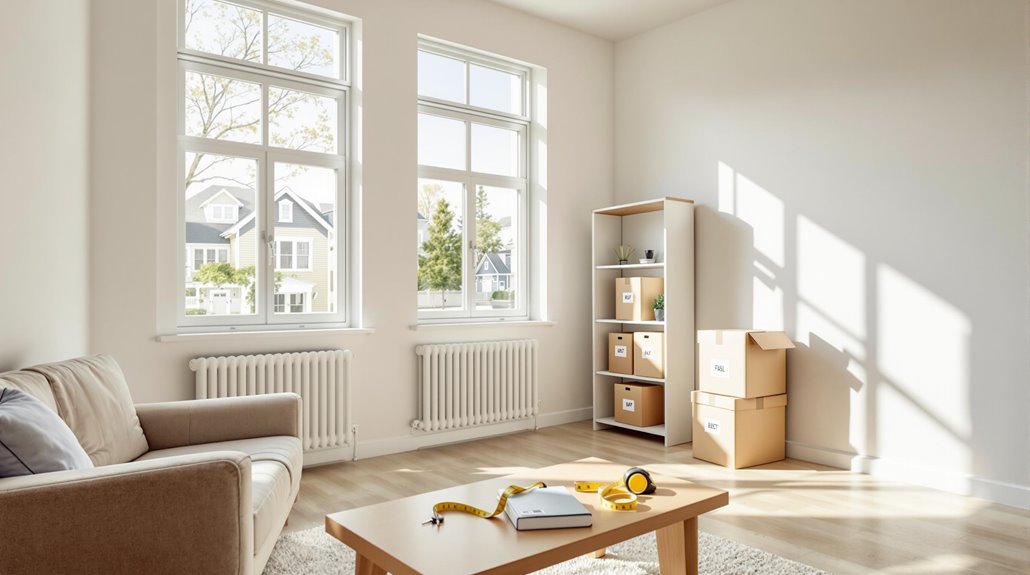Downsizing a home represents one of life’s most practical yet challenging changes. Many homeowners face this decision as circumstances change—whether due to empty nests, retirement, or financial recalibration. The process involves more than simply moving to a smaller space; it requires thoughtful evaluation of needs, possessions, and lifestyle priorities. Understanding the key considerations before taking this significant step can transform what might seem like an intimidating task into an opportunity for renewal and simplification.
Key Takeaways
- Assess your current space with measurements and activity mapping to determine essential needs before downsizing.
- Create a comprehensive financial plan that weighs potential savings against hidden costs like HOA fees and moving expenses.
- Evaluate property options based on lifestyle requirements, accessibility needs, and proximity to essential services.
- Declutter systematically using minimalist techniques to identify valuable possessions and eliminate unnecessary items.
- Design your new space with vertical storage solutions and appropriately scaled furniture to maximize functionality.
Assessing Your Current Space and Future Needs

When considering a shift to a smaller living space, how does one begin the process of evaluating spatial requirements? The foundation lies in methodically documenting current living arrangements through measurements, floor plans, and photographs. This documentation enables homeowners to assess space functionality while identifying vital items and problem areas that affect mobility and comfort.
Evaluating functional needs involves mapping activity zones for cooking, working, and relaxation, then designing storage solutions that maximize vertical space and incorporate multifunctional furniture.
Maximize functionality by strategically organizing zones for daily activities while investing in space-conscious storage and versatile furnishings.
When projecting requirements, future adaptability becomes essential. Anticipate lifestyle changes by incorporating flexible zoning strategies and health-focused features like grab bars or non-slip flooring.
Consider how spaces might evolve with changing mobility needs or caregiving responsibilities. Implementing adaptable layouts with movable partitions guarantees your downsized home remains suitable as circumstances change, providing long-term comfort and accessibility.
Financial Implications of Downsizing
Although downsizing often conjures images of simplified lifestyles, the financial ramifications extend far beyond merely moving to a smaller space. Homeowners must carefully evaluate the potential for equity access from their current property against today’s mortgage rates, which may be higher than their existing loan.
The financial benefits include reduced property taxes, lower utility bills, and decreased maintenance expenses, freeing funds for retirement or investments.
However, hidden costs such as HOA fees, moving expenses, and renovation requirements can offset savings. Some downsizers face unexpected expenses when smaller properties in desirable areas command premium prices.
Successful financial planning involves creating a thorough budget that accounts for both immediate shift costs and long-term living expenses, ideally with guidance from financial advisors who can optimize tax strategies and investment opportunities.
Finding the Right Smaller Property

Selecting the ideal smaller property represents a cornerstone of successful downsizing after addressing the financial considerations. Prospective buyers should evaluate several property types based on lifestyle needs and long-term accessibility.
Condos offer attractive amenities like community pools and fitness centers with minimal maintenance requirements, while townhome features often include small private outdoor spaces and shared walls that reduce utility costs. Single-story homes eliminate stairs, providing safer navigation for aging residents.
When searching for the right property, prioritize locations near essential services, healthcare facilities, and family support networks. Consider homes with age-friendly designs including wider doorways and adaptable bathrooms.
The ideal space should balance square footage requirements with functionality, incorporating efficient storage solutions and versatile floor plans. Urban settings provide walkability to services, while retirement communities offer built-in social networks and maintenance assistance.
Decluttering and Organizing Your Possessions
Shifting to a smaller living space necessitates a methodical approach to decluttering and organizing possessions, forming the foundation of successful downsizing. Adopting a minimalist mindset helps identify items that truly add value to one’s life, using techniques like Marie Kondo’s “spark joy” test to distinguish between essential and superfluous belongings.
Effective decluttering techniques include implementing a room-by-room approach to prevent overwhelm, grouping similar items to identify duplicates, and establishing “maybe” boxes for undecided possessions.
Combat decluttering paralysis by tackling one room at a time, consolidating similar items, and creating a dedicated space for uncertain belongings.
Vertical storage solutions maximize limited space, while categorical sorting streamlines the decision-making process. After downsizing, maintaining order through regular tidying routines, seasonal audits, and a one-in-one-out policy prevents clutter from accumulating again.
These practices not only create physical space but also reduce cognitive overload, leading to enhanced focus and simplified decision-making.
Optimizing Design for Smaller Living Spaces

Designing for a smaller living space requires strategic approaches that maximize both functionality and perceived spaciousness, transforming potential constraints into opportunities for innovative solutions.
Vertical design elements create visual height while maximizing available square footage. Installing mirrors, vertical subway tile patterns, and high-mounted storage draws the eye upward, creating an illusion of taller ceilings.
Strategic light and color management further enhances spatial perception. Lighter ceiling colors, reflective surfaces, and consistent window treatments work together to maintain brightness and flow.
When arranging furniture, place seating with legs on appropriately sized area rugs to unify spaces. For space maximization, utilize corner areas with custom solutions and incorporate open shelving instead of closed cabinetry.
Remember to balance decor scale, combining larger statement pieces with minimal small accessories to prevent visual clutter.
Environmental Benefits of Reduced Square Footage
While the environmental impact of housing continues to grow in significance, downsizing to smaller living spaces offers substantial ecological benefits that extend far beyond personal convenience.
Research shows that tiny homes can reduce ecological footprints by approximately 45%, directly contributing to sustainability practices through decreased resource consumption for heating, cooling, and construction materials.
The shift from America’s growing home sizes—which expanded from 1,660 square feet in 1973 to 2,631 square feet by 2017—toward compact living under 500 square feet delivers remarkable ecological savings.
This change preserves bioproductive land, reduces waste, and fosters positive behavioral changes like mindful consumption patterns.
Additionally, 86% of lifestyle adjustments associated with downsizing support environmental goals, including adoption of rainwater harvesting, solar energy, and reduced dependence on material goods.
Emotional Aspects of Letting Go

How does one face the tide of emotions that accompanies the decision to downsize? For many, homes represent more than physical spaces—they embody decades of cherished memories and personal identity. The process often triggers profound grief as individuals confront the reality of leaving spaces where significant life milestones occurred.
Emotional attachments to possessions further complicate this change. Items inherited from family members or collected over a lifetime carry powerful sentimental value that transcends their practical utility.
Successful downsizers typically develop systematic approaches to memory preservation, such as creating digital archives of meaningful photographs or designating “memory boxes” for irreplaceable keepsakes.
Professional organizers can provide objective guidance through this emotionally charged process, helping establish criteria for determining which possessions truly merit space in the next chapter of life.
Frequently Asked Questions
How Does Downsizing Impact Homeowner’s Insurance Rates?
Downsizing typically reduces homeowner’s insurance rates due to smaller dwelling coverage requirements and decreased personal property values.
When moving to a smaller home, individuals should conduct a cost comparison of their insurance policy options, as premiums often decrease with less square footage to insure.
Location changes may further impact rates based on local risk factors.
Homeowners should review coverage limits after downsizing to guarantee they’re not overpaying for unnecessary protection.
What Legal Considerations Arise When Downsizing Inherited or Gifted Property?
Downsizing inherited or gifted property requires careful attention to legal details.
An accurate property appraisal establishes the fair market value, which affects potential inheritance tax obligations. Beneficiaries must review trust stipulations, verify proper title transfer, and understand any restrictions on the property’s use or sale.
When selling, they should consider capital gains implications and potential exemptions, particularly if the property has appreciated considerably since the original owner’s acquisition.
How Should Couples With Different Downsizing Priorities Reach Compromise?
Couples with different downsizing priorities should implement effective communication strategies to achieve compromise.
By establishing open dialogue sessions, partners can share concerns and create shared pro/con lists that highlight each person’s priorities.
Active listening helps address underlying assumptions while focused “what” questions clarify intentions.
Priority alignment occurs through negotiated trade-offs, weekly compromise trials, and zoning strategies for shared spaces.
Third-party mediators can offer neutral perspectives when couples reach impasses in their downsizing journey.
Will Downsizing Affect My Credit Score or Future Borrowing Ability?
Downsizing has significant credit implications that homeowners should consider before proceeding.
Paying off mortgages removes payment history that contributes to credit scores, while changing the debt-to-income ratio affects future borrowing options.
Strategically using home sale proceeds to reduce high-interest debts can improve creditworthiness. However, insufficient proceeds to cover existing obligations may damage credit.
Maintaining a credit score above 700 guarantees favorable terms for new housing arrangements or other financial needs.
How Do I Maintain Privacy When Transitioning to Higher-Density Housing?
When moving to higher-density housing, residents can maintain privacy through strategic interventions.
Installing soundproofing options like acoustic panels or insulation helps minimize noise transfer between units.
Privacy curtains or window films prevent visual intrusion while still allowing natural light.
Residents should also consider arranging furniture as barriers, using white noise machines to mask sounds, and establishing clear boundaries with neighbors about personal space expectations in common areas.
Bottom Line
Downsizing represents a journey toward simplified living that extends beyond mere space reduction. When approached thoughtfully—with careful financial planning, purposeful decluttering, and intentional space optimization—it offers profound benefits for both personal wellbeing and environmental sustainability. Though emotionally challenging at times, the process ultimately creates opportunities for greater financial freedom, reduced maintenance, and a more intentional lifestyle aligned with one’s true priorities.




